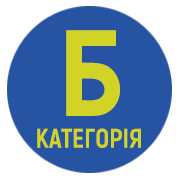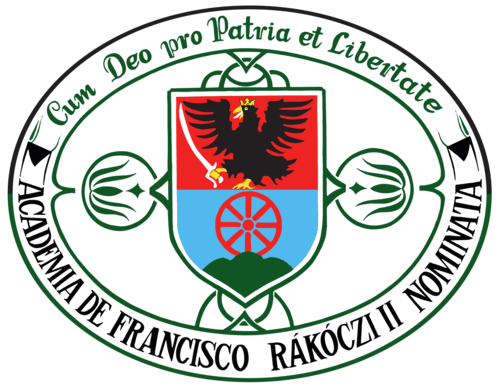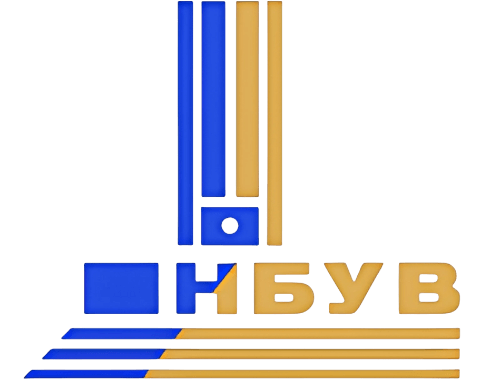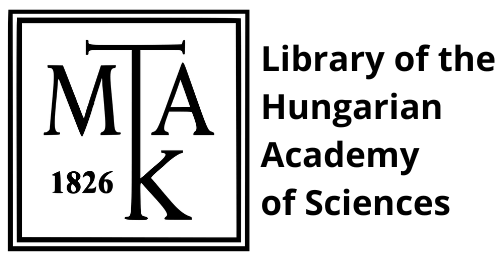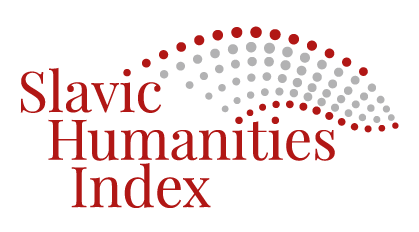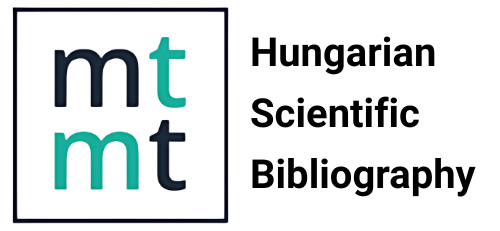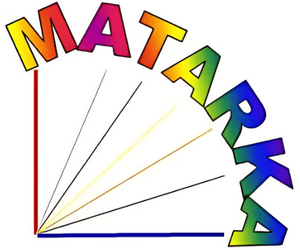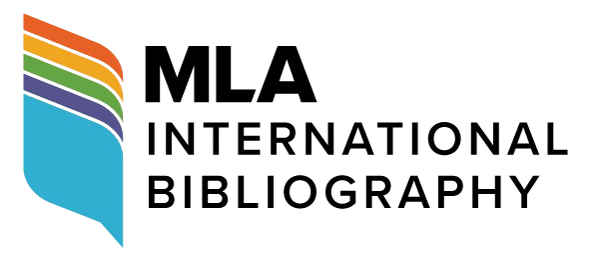For authors
Manuscript Submission
Manuscripts can be submitted through the journal’s website in accordance with the requirements set out in the Author Guidelines. To submit a research article or review, please register on the journal’s website. After successful registration, you will be able to log in. Through the dashboard, you can provide detailed information about the manuscript and upload the study or review prepared in line with the Author Guidelines.
If you encounter technical difficulties during the submission process, please send your manuscript in Microsoft Word format to the following email address: aab-philologica@kmf.org.ua.
The Editorial Board will acknowledge receipt of the manuscript within three working days.
The Editorial Board will conduct an internal evaluation to determine whether the submission falls within the scope of the journal (editorial review). The Editorial Board reserves the right to reject manuscripts that do not meet the established requirements or fall outside the journal’s thematic focus. In the event of rejection, the author will receive a written explanation of the decision.
If the manuscript passes the initial review, the Editorial Board will send it to two independent experts for anonymous peer review. In each case, at least one reviewer must be affiliated with a foreign university or another Ukrainian higher education institution. Review articles are evaluated by one independent reviewer.
Reviewers receive anonymised manuscripts — this is the so-called “double-blind peer review” process. Upon completion, reviewers submit their evaluations to the Editorial Board.
The Editorial Board then forwards the anonymised reviewers’ comments to the author, who is invited to revise the manuscript according to the reviewers’ suggestions. If both reviewers recommend rejection, the author will be notified accordingly. If only one reviewer does not recommend publication, the Editorial Board will send the manuscript to a third independent reviewer. If the third reviewer also rejects the manuscript, the Editorial Board will notify the author of the rejection, providing the reviewers’ evaluations and reasons for the decision.
After the author resubmits the revised manuscript according to the reviewers’ recommendations, it will be checked for plagiarism using the StrikePlagiarism software. Authors will then receive email confirmation of the article’s acceptance for publication. If plagiarism is detected, the author will be notified that the manuscript has been rejected.
The Editorial Board registers all accepted articles and assigns them a DOI identifier.
Anonymisation
Authors must ensure that their manuscripts are anonymised prior to submission by removing any information that may reveal their identity, such as names, institutional affiliations, or self-citations that could identify the author. The Editorial Board verifies anonymisation before the paper is sent to reviewers.
Author information should be submitted in a separate file in three languages (English, Ukrainian, and Hungarian). If the manuscript is written in Slovak, provide the following data in Ukrainian, English, and Slovak:
- Name, academic degree and title.
- Affiliation, position.
- Email address, ORCID identifier.
Confidentiality
All materials submitted to the journal are treated as confidential documents. Editors and reviewers are required to keep the content of submitted manuscripts and any related correspondence strictly confidential. Information about a submitted manuscript will not be disclosed to anyone other than the corresponding author, reviewers, potential reviewers, and members of the Editorial Board, as appropriate.
The journal also ensures that the identities of reviewers remain confidential and are not shared with authors. Personal data obtained during the editorial process are handled in compliance with data protection regulations and used solely for editorial and publishing purposes.
Manuscript Length
Acta Academiae Beregsasiensis, Philologica publishes original (previously unpublished) research articles and reviews in the fields of philology, linguistics, and literary studies. Manuscripts intended for publication must be submitted electronically in .doc or .docx, and .pdf formats either through the journal’s internal submission system or by email to aab-philologica@kmf.org.ua.
The journal accepts manuscripts in Ukrainian, English, Hungarian, and Slovak.
For the Studies section, manuscripts must be between 10,000 and 80,000 characters, including spaces, footnotes, abstracts, and the bibliography. Abstracts must be provided in Ukrainian, English, and Hungarian (in case of Slovak articles, abstracts should be available in Ukrainian, English, and Slovak), each at least 1,800–1,900 characters (without spaces), along with 5–8 keywords.
For the Reviews section, manuscripts must be between 3,000 and 30,000 characters, including spaces.
Font Size and Styles
- Title of the manuscript: 16 pt, bold
- Subtitle: 12 pt, bold
- Section titles: 12 pt, bold
- Subsections: 11 pt, bold italic
- Main text: 11 pt, regular
- Titles of tables, figures, images: 11 pt, regular
- Sources of tables, figures, images: 9 pt, italic
- References: 10 pt, regular
- Abstracts: 10 pt, regular
- Keywords: 10 pt, italic
The default font for articles is Sitka Display. If your manuscript includes special characters not supported by Sitka Display, please attach the corresponding character set upon submission.
Sample File
A downloadable sample file is available on the journal’s website for manuscript preparation. By following the instructions in the template, all sections, figures, and tables will retain the author’s formatting after technical editing.
Using the template ensures that the manuscript meets the journal’s formatting requirements. The document includes predefined styles indicating the font size, line spacing, and other formatting for titles, tables, figures, etc. By using the template, authors do not need to manually adjust formatting — the document applies the appropriate styles automatically.
Style names are shown in brackets in red, for example: [SPh-chapter title], [SPh-first-paragraph]. All style labels begin with SPh. Helpful tips are provided in blue text. The header, footer, DOI, and UDC identifiers will be added by the editors.
Please do not change the page margins or font sizes, and do not use styles other than those provided. We recommend renaming the downloaded template file and writing directly in the renamed document.
Highlights
For linguistic or other data requiring emphasis, please use italics. We recommend setting the paragraph style first and then applying italics, as applying a new style afterward may overwrite existing formatting.
Citations
The journal uses in-text citations. References in parentheses should include the author’s surname, year of publication, and page number(s), using the abbreviation p. or pp. for pages: (Smith, 2025, p. 20).
For two authors, use an en dash between surnames: (Kovács–Molnár, 2023, p. 111). For three or more authors, use et al. after the surname of the first author. When referring to multiple pages, use an en dash: (Csernicskó et al., 2020, pp. 105–112).
When citing multiple works by the same author from the same year, add lowercase letters to the year: (Spolsky, 2022a, 2022b). When citing multiple sources within one parenthesis, list them chronologically: (Nagy, 2001; Csernicskó, 2007; Gazdag, 2021).
For websites and online resources, use abbreviations such as (URL1), (URL2) in the text, and provide the full URLs in the bibliography. Use footnotes only when absolutely necessary; endnotes are not allowed.
Tables and Figures
Tables, figures, and images must be numbered and titled. In the main text, refer to tables and figures by their number.
When preparing tables and inserting figures or photos, please consider the journal’s page size. Images should be submitted in high resolution (minimum 300 dpi), in .jpg or .png format, numbered, and attached as separate files.
Figures should be submitted in editable format, with data attached in an Excel file. Always indicate the source of each table and figure. If they are your own, please note: The author’s own work. The title should appear above the table or figure, and the source below.
Bibliography
All references cited in the manuscript should be listed in continuous numbering, in alphabetical order by the author’s surname, and in chronological order. List Cyrillic references first, followed by Latin references. If a reference is available online for free or has a DOI, provide the link or identifier. Online sources should appear at the end as URL1, URL2, in the order they are cited in the text, not alphabetically.
In the References section, provide a Latin transliteration and an English translation of each Cyrillic reference immediately following the original. For Ukrainian transliteration, please use: http://translit.kh.ua/?lat&passport.
Titles of monographs, edited volumes, and journals should be italicised. Please follow the formats shown in the examples below.
Monographs
Масенко Лариса 1999. Мова і політика. Київ: Соняшник.
Masenko, Larysa 1999. Mova i polityka [Language and Politics]. Kyiv: Sonyashnyk. (In Ukrainian)
Csernicskó István 2013. Államok, nyelvek, államnyelvek. Nyelvpolitika a mai Kárpátalja területén (1867–2010). Budapest: Gondolat Kiadó.
Csernicskó, István 2013. Államok, nyelvek, államnyelvek. Nyelvpolitika a mai Kárpátalja területén (1867–2010) [States, Languages, State Languages. Language Policy in the Territory of Present-day Transcarpathia]. Budapest: Gondolat Kiadó. (In Hungarian)
Books Written by Multiple Authors
Залізняк Ганна – Масенко Лариса 2001. Мовна ситуація Києва: день сьогоднішній та прийдешній. Київ: Видавничий дім «КМ Академія».
Zaliznyak, Hanna – Masenko, Larysa 2001. Movna sytuatsiia Kyieva: den sohodnishnii ta pryideshnii [Language Situation in Kyiv: the Present Day and the Future]. Kyiv: KM Akademiia. (In Ukrainian)
Beregszászi Anikó – Csernicskó István – Orosz Ildikó 2001. Nyelv, oktatás, politika. Beregszász: Kárpátaljai Magyar Tanárképző Főiskola.
Beregszászi, Anikó – Csernicskó, István – Orosz, Ildikó 2001. Nyelv, oktatás, politika [Language, Education, Politics]. Beregszász: Kárpátaljai Magyar Tanárképző Főiskola. (In Hungarian)
Edited Volumes
Майборода Олександр – Шульга Микола – Горбатенко Володимир – Ажнюк Борис – Нагорна Лариса – Шаповал Юрій – Котигоренко Віктор – Панчук Май – Перевезій Віталій ред. 2008. Мовна ситуація в Україні: між конфліктом і консенсусом. Київ: Інститут політичних і етнонаціональних досліджень імені І. Ф. Кураса НАН України.
Mayboroda, Oleksandr – Shulha, Mykola –Horbatenko, Volodymyr – Azhnyuk, Borys – Nahorna, Larysa – Shapoval, Yurij– Kotyhorenko, Viktor – Panchuk, Maj – Perevezij, Vitalij eds. 2008. Movna sytuatsiya v Ukrayini: mizh konfliktom i konsensusom [Language Situation in Ukraine: between Conflict and Consensus]. Kyiv: Instytut politychnykh i etnonatsional'nykh doslidzhen' imeni I. F. Kurasa NAN Ukrayiny. (In Ukrainian)
Kiss Jenő – Pusztai Ferenc szerk. 2018. A magyar nyelvtörténet kézikönyve. Budapest: Tinta Könyvkiadó.
Kiss, Jenő – Pusztai, Ferenc eds. 2018. A magyar nyelvtörténet kézikönyve [Handbook of Hungarian Language History]. Budapest: Tinta Könyvkiadó. (In Hungarian)
Spolsky, Bernard ed. 2012. The Cambridge Handbook of Language Policy. New York: Cambridge University Press.
Journal Articles
Яцьків Марія 2020. Фраземи на позначення мовленнєвої та мисленнєвої діяльності в художніх творах Мирослава Дочинця. Науковий вісник Ужгородського університету. Cерія: Філологія 43/1: c. 313–317. https://doi.org/10.24144/2663-6840.2020.1.(43).313-317
Yatskiv, Mariia 2020. Frazemy na poznachennia movlennievoi ta myslennievoi diialnosti v khudozhnikh tvorakh Myroslava Dochyntsia [Phrases denoting speech and mental activities in the literary works of Myroslav Dochynets]. Naukovyi visnyk Uzhhorodskoho universytetu. Seriia: Filolohiia 43/1: s. 313–317. https://doi.org/10.24144/2663-6840.2020.1.(43).313-317 (In Ukrainian)
Kontra Miklós 2018. A 90 éves William Labov, a társadalmilag reális nyelvészet megalkotója. Magyar Nyelv 114/1: 1–22. o. https://doi.org/10.18349/MagyarNyelv.2018.1.1
Kontra, Miklós 2018. A 90 éves William Labov, a társadalmilag reális nyelvészet megalkotója [William Labov at 90: Creating a socially realistic linguistics]. Magyar Nyelv 114/1: 1–22. o. https://doi.org/10.18349/MagyarNyelv.2018.1.1 (In Hungarian)
Laihonen, Petteri 2016. Beware of the dog! Private linguistic landscapes in two ‘Hungarian’ villages in South-West Slovakia. Language Policy 15/4: pp. 373–391. https://doi.org/10.1007/s10993-015-9358-y
Book Chapters
Заремба Олександр – Римаренко Сергій 2008. Роль зовнішніх чинників у політизації мовних проблем. В: Майборода Олександр та ін. ред. Мовна ситуація в Україні: між конфліктом і консенсусом. Київ: Інститут політичних і етнонаціональних досліджень імені І. Ф. Кураса НАН України, с. 258–280.
Zaremba, Oleksandr – Rymarenko, Serhiy 2008. Rol zovnishnikh chynnykiv u polityzatsii movnykh problem [The role of external factors in the politicisation of language problems]. In: Mayboroda, Oleksandr et al. eds. Movna sytuatsiya v Ukrayini: mizh konfliktom i konsensusom [Language Situation in Ukraine: between Conflict and Consensus]. Kyiv: Instytut politychnykh i etnonatsional'nykh doslidzhen' imeni I. F. Kurasa NAN Ukrayiny, s. 258–280. (In Ukrainian)
Csernicskó István – Melnyik Szvitlana 2010. A nyelvpolitika fogalma. In: Fedinec Csilla – Vehes Mikola főszerk. Kárpátalja 1919–2009: történelem, politika, kultúra. Budapest: Argumentum – MTA Etnikai-nemzeti Kisebbségkutató Intézete, 553–562. o.
Csernicskó, István – Melnyik, Szvitlana 2010. A nyelvpolitika fogalma [The concept of language policy]. In: Fedinec, Csilla – Vehes, Mikola eds. Kárpátalja 1919–2009: történelem, politika, kultúra. Budapest: Argumentum – MTA Etnikai-nemzeti Kisebbségkutató Intézete, 553–562. o. (In Hungarian)
Newspaper Articles from Printed Sources
Гандзій Олександр 2019. Почав діяти новий правопис. Газета по-українськи 42/2206: с. 2.
Handzii, Oleksandr 2019. Pochav diiaty novyi pravopys [A new orthography has come into effect]. Hazeta po-ukrainsky 42/2206: s. 2. (In Ukrainian)
Lajos Mihály 2021. Névdivat-alakulás Kárpátalján. A Katalinoktól és Istvánoktól a Vannesszákig és Patrikokig. Kárpátalja 1046: 10. o.
Lajos, Mihály 2021. Névdivat-alakulás Kárpátalján. A Katalinoktól és Istvánoktól a Vanesszákig és Patrikokig [Name fashion development in Transcarpathia. From Katalins and Istváns to Vanesszas and Patriks]. Kárpátalja 1046: 10. o. (In Hungarian)
Online Articles
If the name of the author of an online article is unknown, please follow the rule for Internet links.
Тарканій Ганна 2011. Закарпатська відповідь українському «мовному питанню». Закарпаття онлайн, 25 березня 2011. https://zakarpattya.net.ua/News/80913-Zakarpatska-vidpovid-ukrainskomu-movnomu-pytanniu- (Accessed: 18.10.2025).
Tarkanii, Hanna 2011. Zakarpatska vidpovid ukrainskomu «movnomu pytanniu» [Transcarpathian answer to the Ukrainian “language issue”]. Zakarpattia onlain, 25 March 2011. https://zakarpattya.net.ua/News/80913-Zakarpatska-vidpovid-ukrainskomu-movnomu-pytanniu- (Accessed: 18.10.2025). (In Ukrainian)
Márku Anita 2020. Édes-bús nosztalgia kárpátaljai Élőnyelvi Konferenciák jubileumain. Hodinka Antal Nyelvészeti Kutatóközpont, 2020. szeptember 28. http://hodinkaintezet.uz.ua/edes-bus-nosztalgia-karpataljai-elonyelvi-konferenciak-jubileumain/ (Accessed: 21.10.2025).
Márku, Anita 2020. Édes-bús nosztalgia kárpátaljai Élőnyelvi Konferenciák jubileumain [Bittersweet nostalgia on the jubilee of the Hungarian Sociolinguistics Conferences in Transcarpathia]. Hodinka Antal Nyelvészeti Kutatóközpont, 28 September 2020. http://hodinkaintezet.uz.ua/edes-bus-nosztalgia-karpataljai-elonyelvi-konferenciak-jubileumain/ (Accessed: 21.10.2025). (In Hungarian)
Internet Links
URL1: Központi Statisztikai Hivatal. http://www.ksh.hu/?lang=hu (Accessed: 20.09.2025).
URL1: Központi Statisztikai Hivatal [Hungarian Central Statistical Office]. http://www.ksh.hu/?lang=hu (Accessed: 20.09.2025). (In Hungarian)
URL2: Закон України «Про забезпечення функціонування української мови як державної». https://zakon.rada.gov.ua/laws/show/2704-19 (Accessed: 22.10.2025).
URL2: Zakon Ukrainy «Pro zabezpechennia funktsionuvannia ukrainskoi movy yak derzhavnoi» [Law of Ukraine “On Supporting the Functioning of the Ukrainian Language as the State Language”]. https://zakon.rada.gov.ua/laws/show/2704-19 (Accessed: 22.10.2025). (In Ukrainian)
